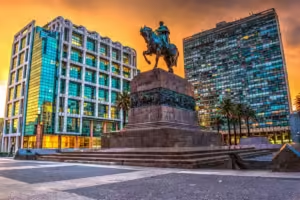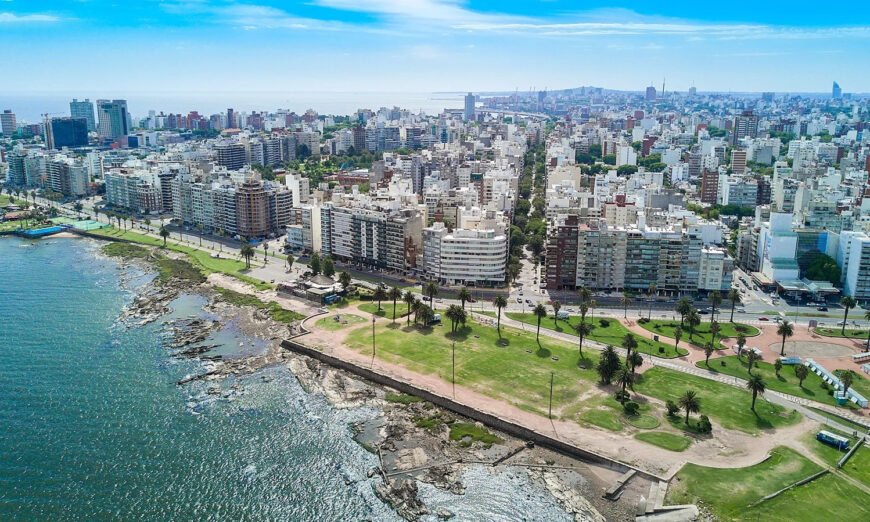
Uruguay officially the Oriental Republic of Uruguay is a country in South America. It shares borders with Argentina to its west and southwest and Brazil to its north and northeast, while bordering the Río de la Plata to the south and the Atlantic Ocean to the southeast. It is part of the Southern Cone region of South America. Uruguay covers an area of approximately 176,215 square kilometres (68,037 sq mi). It has a population of around 3.6 million, of whom nearly 2 million live in the metropolitan area of its capital and largest city, Montevideo.
The country stands out in Latin America for its strong democratic institutions; high per capita income; and low levels of corruption, poverty, and inequality. Due to its domestic success and commitment to international engagement, Uruguay plays a more influential role in global affairs than its size might suggest.
Uruguay ranks among the top countries in Latin America in the main rankings that gather information on aspects of political stability and democratic soundness. These indicators show that Uruguay is a country with a strong democratic tradition, based on transparent government policy and broad economic freedom. In the last few years, Uruguay has positioned itself as a trustworthy and attractive destination for foreign investors, due to its favorable investment climate and promising macroeconomic performance. Its strategic location and international treaties make the country ideal for the development of a regional hub With Mercosur and the Free Trade Agreement between Mexico and Uruguay, there is access to a market of 400 million people, which gathers together 76% of Latin America’s GDP and a foreign trade flow of almost 80% of the total flow in Latin America.
The Uruguayan landscape is largely characterized by gently rolling land, with an average elevation of about 383 feet (117 metres). Tidal lakes and sand dunes fringe the coastline. Elsewhere there are broad valleys, plains (pampas), low plateaus and hills, and ridges—notably Haedo Ridge (Cuchilla de Haedo) in the north and Grande Ridge (Cuchilla Grande) in the southeast—that are a southward extension of the Brazilian Highlands. Mount Catedral, which rises to 1,685 feet (514 metres) near the southeastern coast, is the highest point in the country. The valleys and coastal plains are covered with deposits of sand, clay, and fertile alluvium.

